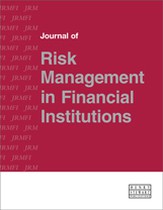Stress testing bank profitability
Abstract
A defining difference of macro-style stress testing is the explicit consideration of profitability dynamics in the stress scenario. Traditional stress testing had focused almost exclusively on losses only, but a complete assessment of capital adequacy under stress must take into account not just the balance sheet but also the income statement. For instance, in the 2013 US stress test, reduction in projected income for the 18 mandatory bank holding companies (BHCs) covered nearly 60 per cent of projected stress losses. This paper describes and discusses a framework for modelling the major components of the income statement for BHCs using the US regulatory reports as an empirical illustration. It reviews approaches taken by the industry and traces the remarkable development in the wake of the financial crisis. The findings — perhaps unsurprisingly and in line with previous literature — show that successfully modelling profitability requires a tailored BHC-specific approach to revenue segmentation and modelling. The paper argues that failure to pursue a relatively granular income source segmentation along different business activities, far more granular than reflected in typical regulatory reports, will obscure significant underlying differences in macro risk factor sensitivities.
The full article is available to subscribers to the journal.
Author's Biography
Michael Duane is a Principal in Oliver Wyman Financial Services’ Finance & Risk practice, based in New York. He has consulted to banks, insurers and public institutions across a range of risk and regulatory topics, including many engagements on enterprise-wide stress testing. He is a graduate of Princeton University.
Til Schuermann joined Oliver Wyman in August 2011 as a Partner in the Finance & Risk and Public Policy practices. His focus is on stress testing, capital planning, enterprise-wide risk management and corporate governance. Prior to Oliver Wyman, Til was a Senior Vice President at the Federal Reserve Bank of New York where he held numerous positions, including head of Financial Intermediation in Research and head of Credit Risk in Bank Supervision.
Peter Reynolds is a Partner at Oliver Wyman in the Finance & Risk practice. Peter has worked in depth with major financial institutions across the USA, Europe and Middle East, focusing on stress testing and capital planning for banks and insurers, asset/liability management and credit risk across both retail and wholesale assets. He joined the firm in 2004.
Citation
Duane, Michael, Schuermann, Til and Reynolds, Peter (2013, December 1). Stress testing bank profitability. In the Journal of Risk Management in Financial Institutions, Volume 7, Issue 1. https://doi.org/10.69554/EYNF2940.Publications LLP
